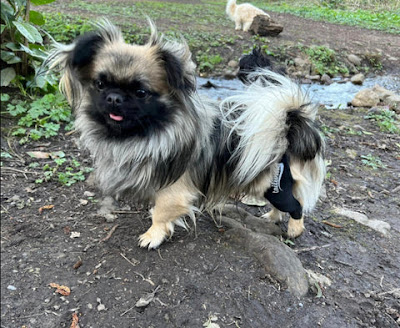Traveling
and Exercising with a Dog Knee Brace
Introduction
For
active dog owners, ensuring their furry companions can participate in travel
and exercise activities is important. When a dog requires a knee brace due to
an injury or condition, it's essential to take certain precautions and
considerations to ensure their comfort, safety, and overall well-being. In this
article, we will provide valuable tips for active owners who travel or engage
in exercise with a dog wearing a dog knee brace.
Consult
with Your Veterinarian
Before
embarking on any travel or exercise plans, it is crucial to consult with your
veterinarian. They can provide specific guidelines based on your dog's
condition and help determine whether travel or exercise is suitable. Your
veterinarian can also offer advice on the duration and intensity of exercise
your dog can handle with the knee brace. Clear communication with your vet will
ensure that your dog's health and safety are prioritized.
Ensure
Proper Fit and Comfort
Before
traveling or engaging in exercise activities, ensure that the dog's knee brace
fits properly and is comfortable. A poorly fitted brace can cause discomfort,
irritation, or restrict movement. Regularly inspect the brace for signs of wear
and tear, loose straps, or any adjustments that need to be made. It's also
important to choose a high quality dog knee brace that is specifically designed for your dog's size and breed to
ensure optimal fit and support.
Gradually
Introduce Exercise
If
your dog is recovering from a knee injury or surgery, it's crucial to introduce
exercise gradually. Start with short, low-impact activities and gradually
increase the duration and intensity as recommended by your veterinarian. This
approach allows the dog's muscles, joints, and ligaments to adapt and
strengthen without putting excessive strain on the injured knee. Consider
controlled exercises like leash walks, gentle swimming, or supervised play
sessions.
Choose
Low-Impact Activities
When
planning exercise activities, opt for low-impact exercises that minimize stress
on the injured knee joint. Activities such as walking slow jogging, or hiking
on even terrain can be beneficial. Avoid activities that involve jumping,
sudden stops, or sharp turns, as they can potentially aggravate the injury or
put excessive strain on the dog knee brace. Engaging in low-impact exercises allows your dog to stay active
while promoting healing and minimizing the risk of further injury.
Consider
Protective Gear
In
addition to the dog knee brace, you
may want to consider using additional protective gear for your dog during
travel or exercise. Protective boots can provide extra cushioning and protect
the paws from rough surfaces. They can also help maintain traction and
stability, especially on slippery terrains. Consult with your veterinarian to
determine if any additional protective gear, such as elbow or chest protectors,
is necessary based on your dog's specific condition and activity level.
Provide
Adequate Rest and Recovery Time
While
staying active is important, it's equally crucial to provide your dog with
adequate rest and recovery time. Allow for periods of rest and avoid
overexertion, especially during travel or exercise sessions. Monitor your dog
for signs of fatigue, pain, or discomfort and adjust the activity level
accordingly. Remember that rest is essential for healing, and pushing your dog
beyond their limits can hinder the recovery process.
Prepare
for Travel
When
traveling with a dog wearing a knee brace, make necessary preparations to
ensure their comfort and safety. If traveling by car, consider using a pet
barrier or a travel crate to secure your dog and prevent sudden movements.
Ensure that the knee brace is properly fitted and not causing any discomfort
during the journey. If flying or taking public transportation, check with the
respective carrier regarding their policies for accommodating dogs with knee
braces.
Conclusion
Traveling
and exercising with a dog knee brace
requires careful planning and consideration. Consulting with your veterinarian,
ensuring proper fit and comfort, gradually introducing exercise, choosing
low-impact activities, considering protective gear, providing adequate rest,
and preparing for travel are all essential steps to ensure your active dog can
safely and comfortably participate in these activities. By taking these
precautions and prioritizing your dog's well-being, you can continue to enjoy
travel and exercise adventures while supporting your dog's recovery and overall
joint health.
















